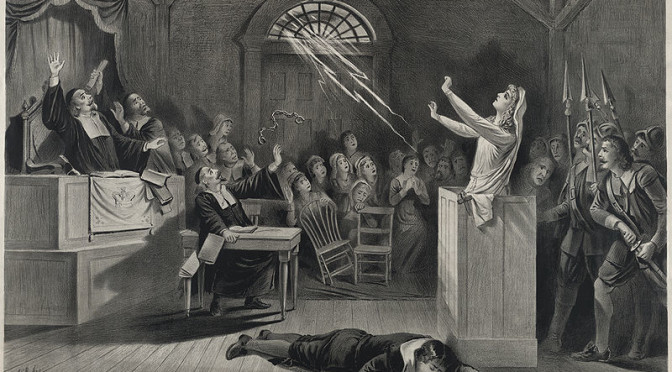Laurel Ulrich was perplexed that she couldn’t find much information about Puritan women. As a graduate student at the University of New Hampshire, she was writing a seminar and then an article on early American women. She wanted to let people know that there were other women instead of just the witches. In her article, she wanted to stress that we need to pay attention to the invisible women and wrote “Well-behaved women seldom make history.”
She wrote that in 1976. Nearly twenty years later, a journalist called her up and asked if she could use that quote. Ulrich said yes and soon got asked by others if they could to print that phrase on t-shirts. “Sure! Send me a t-shirt,” Ulrich replied. It was then that the phrase turned into a slogan and phenomenon. It’s been seen on bumper stickers, quilts, coffee mugs, and used by organizations. (Sometimes without her permission.) People interpreted it a variety of ways, and it was used quite differently than she intended. However, she took an interest in the different views of the phrase and saw why people used it the way they did.
So Ulrich decided to write a book called Well-Behaved Women Seldom Make History which explores why some women are remembered and why some are not, how they’re remembered, what has been done for them to be remembered, and what we can do. The book centers around three feminist writers—Christine de Pizan of France who lived in the fifteenth century, American Elizabeth Cady Stanton who lived in the nineteenth century, and Virginia Woolf of England who lived in the twentieth century. Though these three women lived in different time periods and places, they were concerned with the way women were viewed. Ulrich reflects on their lives while branching out to many other women who made a mark on history. I learned about women I hadn’t heard of and new information on subjects I already knew about it.
For example, I knew about Rosa Parks, but didn’t know there were other women before her who refused to give up their seat on the bus, but a journalist decided that she was the best candidate. Since she came from a conservative background, her actions would make a bigger impact. Lots of times it’s the way people are presented that help them make history. Ulrich points out that it depends on what you mean by “well-behaved.”
Some daring women were almost not remembered—it took years and multiple efforts to publish an early biography of Harriet Tubman. How many other women need biographies? There are just so many women that are waiting for their stories to be told! At an authors’ conference discussing her book, Ulrich said “History is a dialogue between present and past….What we bring to it is our questions and our concerns. If some women are invisible in history it’s because for some reason that link between the present and past has been broken.”
It’s interesting to note that Ulrich doesn’t really discuss royalty—and that is actually quite refreshing! Ulrich uses a huge spectrum of women. From Joan of Arc being a controversial figure to Mormon polygamist wives who were career women and to the extreme 1970s to milkmaids’ contributions to society and back to us in modern times, your eyes will be opened and you will want to get out there and discover stories—including family stories. The importance of writing your own personal history also stands out.
Ulrich succeeded in writing as she put it a “feel good book.” (It’s already being used as a future reference for this writer!) Her last chapter is powerful. It includes another woman, Jill Portugal, who owns a small t-shirt business. Her t-shirts say things like, “Ignore Celebrities” and “Anti-Porn Star.” Though she’s up against an industry that makes billions, her motto is brilliant: “Taking over the world one shirt at a time.”
Ulrich says, “If well-behaved women seldom make history, it is not only because gender norms have constrained the range of female activity but because history hasn’t been very good at capturing the lives of those whose contributions have been local and domestic.”
The last statement Ulrich makes has three valid points about how people can make history—the last being the most important. “Well-behaved women make history when they do the unexpected, when they create and preserve records, and when later generations care.”
Pictures: Salem Witch by Joseph E. Baker, A Fair Puritan by E. Percy Moran, and photograph of woman and child reading taken by unknown photographer


